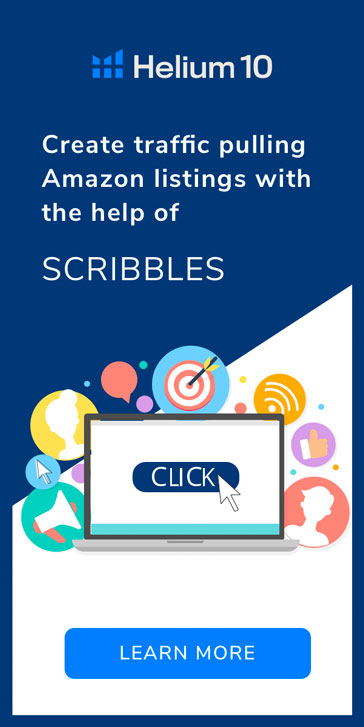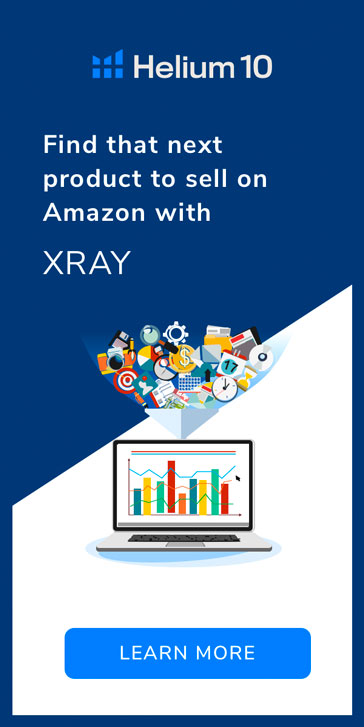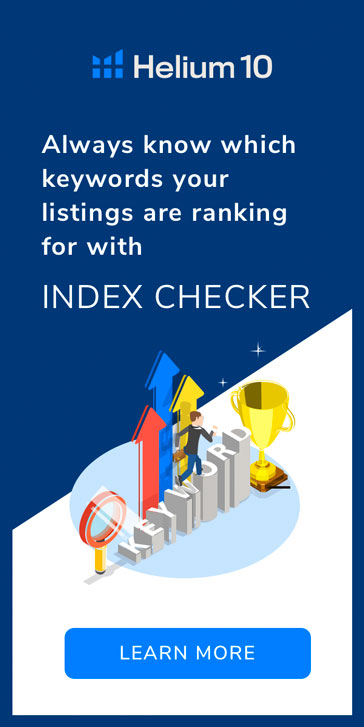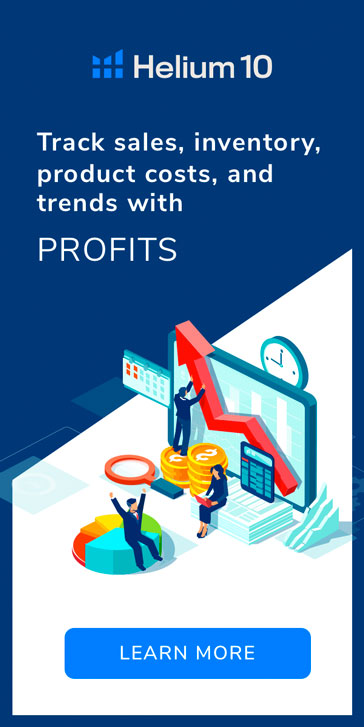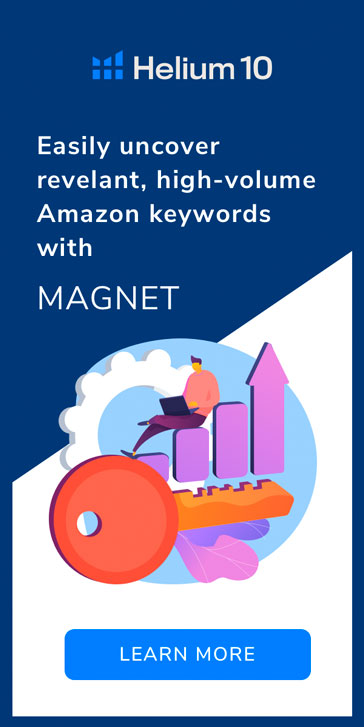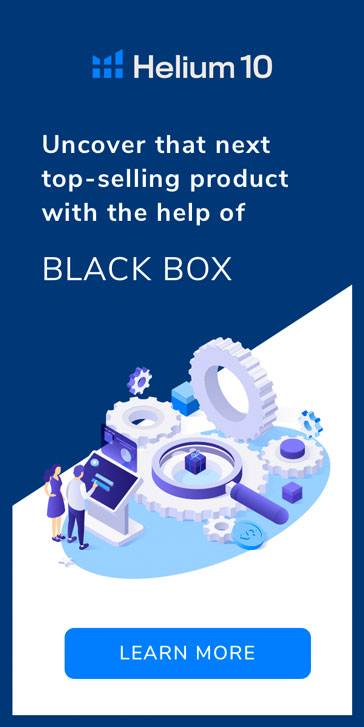Establishing the right criteria early on in your Amazon product research process can produce profitable products in just about any niche.
Selling a successful product on Amazon is always preceded by choosing the right product first. So we came up with some valuable Amazon product research tips for you to use when nailing down that perfect product.
Beginning Your Amazon Product Research: Selling What Your Love VS What Already Has High Sales
Generally speaking, many sellers believe that there are only two main ideas for choosing private label products to sell on Amazon:
- Pursue products that are selling well right now, or
- Pursue products that you personally like.
As any experienced seller will tell you that the Amazon platform is not the best place to launch a new product that doesn’t already have demand as seen in search volume numbers. The best Amazon product research tips stem from the idea that to be successful on Amazon, you must choose a product niche that already has interest on a scale large enough to be profitable.
While there isn’t one definite way that is more correct than the other, there is much more to take into account when performing product research. Likewise, if you truly want to find a profitable private label product that will capture a significant number of sales, there are many critical factors to consider before you even think about creating a product listing.
For more great Amazon product research tips that can help you to settle on the best possible product for your e-commerce business, check out The Ultimate Guide to Amazon Product Research below:

3 Most Common Mistakes When Performing Amazon Product Research
When performing product research, HOW you look is just as important as WHERE you look for selling opportunities. Some of the more common mistakes new and existing sellers can make include:
- Considering product sales numbers and other pertinent data outside the Amazon search engine (i.e. Google, Bing, and other sources not affiliated with Amazon) – The issue here is that the accuracy of the product data you are researching won’t be as accurate as if you were to use information derived from Amazon estimates. Helium 10 offers highly accurate estimations that stem from Amazon trends and reflects the true market behavior of Amazon customers.
- Targeting products that have become virally popular instead of products that have gained popularity steadily over time – Much like the now-infamous fidget spinner craze between 2016-2018, product ideas that reach a high level of popularity quickly are often likely to fall just as fast. Many sellers looking to get rich quick have gotten burned because by the time they place an order for a similar product and attempt to sell it, the popularity has waned and now the seller is stuck with inventory that will not see a justifiable profit.
- Going after a product niche that is high profile and has a lot of competition – There are some very lucrative products to sell on Amazon, but trying to break into high-profile, high-competition product niches can be extremely difficult for many reasons such as a low chance of profitability and high costs. Another lesser-known result of this mistake is that you can also be targeted by product listing hijackers looking to cut into your profit margin.
The Amazon Product Research Criteria Checklist
What factors should be considered crucial in your decision-making process for effective Amazon product research? Here are some of the things to take into account as you narrow down your list:
Product Simplicity
Product simplicity relates to the difficulty of manufacturing the product as a whole unit. Typically, the belief is that the fewer moving parts, the better because there is less to go wrong and less chance of returns due to the product malfunctioning.
However, if you find a really good selling opportunity in a product that requires many smaller components to complete the whole, you may want to insist on using high-quality materials to help ensure minimal parts failure.
Demand for Product Type
Product demand on Amazon is determined by different factors which signal that people want a particular kind of product. Search volume for relevant keywords associated with a product type is one such factor. The number of customers that want a particular kind of product can also be determined by the number of sales per month for that niche.
It should be noted though that products with low demand will likely result in higher overall marketing costs because you will need to reach additional potential buyers from outside of Amazon (think Facebook ads, search engine advertising, etc.) to drive traffic to your listing to generate sales.
If you are going with a product that you personally like, make sure there are sales numbers to support its viability as a profitable product.
Competition/Market Saturation
Product competition in each Amazon marketplace is determined by the number of other sellers offering the same or similar products to your own. Another factor to consider for market saturation is how the sales are spread over the different brands — are they spread evenly, or are all the profits going to three or less top sellers?
If your chosen Amazon marketplace contains many sellers offering the same type of product as you, marketing costs will most likely be quite expensive to effectively compete in that product niche.
Review Count
A review count is the number of reviews that a specific product ASIN (Amazon Standard Identification Number) has accumulated since being launched on Amazon’s platform.
If most of the products that rank highly on page 1 for the niche you wish to enter into have 300+ reviews, the product may be considered a “high barrier to entry” item. This means that your ability to compete with the top ranking, established products that have been generating sales for a long time will be much harder. In this situation, it will be more difficult to dominate in sales against products that have been on Amazon for some time.
Since customers tend to trust products with a high number of reviews over a newer product, they will most often choose the known, reviewed product.
However, performing a proper product launch can help you to get initial reviews on your product, as can providing excellent customer service. If you do decide to enter into a space with well-reviewed contenders, be sure to come in prepared.
Successful Competitors
These are the sellers on page 1 making high revenue per month, and there is typically between 2 to 5 successful competitors in every popular product niche.
While the prospect of many sellers earning substantial revenue on page 1 is promising, it is more ideal to enter a niche that has an even spread of sales across the brand. If only a few sellers are doing well, it means they control most of the market share, making it hard to compete.
To stay competitive against top sellers, you will have to bring a big budget to the table for Amazon PPC and/or key differentiating factor that makes you stand out.
Star Rating of Sellers on Page 1
Another major determining factor for customers is the overall approval rating they give to a specific product with a review. The rating ranges from 1-5 stars with 1 star being a poor rating and 5 being a good rating.
If most of the products on the page 1 search results are between 4-5 Stars, you may have difficulty competing. To counter this, you can gain good early reviews by creating a better product or showcasing a unique feature differentiates your product in a market with similar products with a high star rating.
Pricing
Pricing can be a tricky thing when trying to introduce a new product to a niche. As a general rule, most new sellers shouldn’t try to deviate too much with price in comparison to what the market is saying.
If most products on page 1 are priced between $20-$25, it’s best to emulate the market pricing when you are first starting out. If your price is too low, customers may assume that your product is inferior to your competitor’s products.
However, if you try entering that niche with a $50 price point, you may either draw ire from other sellers or see low sales because your price was unjustifiably too high. That said, this same market may be primed and ready for a premium priced product, so don’t always let competitor’s prices deter you from pricing your product higher than theirs.
While price can depend on the product itself, shipping costs, etc., you may want to find products with a $15 per unit retail price to get a decent profit margin (after FBA fees).
Seasonality
This relevant metric represents if people will be interested in your product at a specific time of year only, or remain interested all year round, AKA an “evergreen” product.
For less experienced sellers, targeting evergreen products in your product research will likely be easier due to the consistent demand for such products.
Seasonal products are recommended for more experienced sellers because of the high upfront costs and the level of risk. However, new sellers can add seasonal products to their brands at a later time as a supplemental revenue stream.
Legal Compliance
Selling certain types of products can have legal implications, and depending on the possible revenue, may not be worth it. Restrictive laws and regulations can be placed on specific product niches by governments and regulatory agencies, depending on which Amazon marketplace you plan to sell in.
Additionally, Amazon has its own brand of red tape in the form of the list of banned items that you cannot sell anyway.
New sellers may want to avoid researching products that require a significant amount of government oversight. These restrictions can range from materials used to build your product to import fees for the country in which your Amazon marketplace operates.
Product Size
The physical dimensions (length, width, and height) of your product can affect many of the other factors on this list, along with the product weight. The size of your product can heavily affect some of your costs as well such as manufacturing, shipping, and storage fees.
Bigger, heavier products will often command heftier shipping costs and limit your transportation options. Lighter, smaller items are generally cheaper to produce, store, and transport, so they are recommended for new sellers.
Copyrights
Besides complying with national laws and Amazon TOS (Terms of Service), your product niche may also possess legal restrictions instituted by patents and trademarks of another seller. These copyrights can prevent you from copying or duplicating specific features or entire products depending on the parameters set.
Before committing to any one product type, be sure to research into whether or not a seller or entity holds any particular exclusionary or proprietary patents to reduce your risk of being sued or removed from Amazon.
Sales Trends
Part of judging a product’s profitability is measuring the potential revenue trajectory of your product using a competing ASIN’s sales data as a model. The data showing if sales have increased, decreased, or stagnated over time can be significant indicators of how profitable a product type may be in the future.
If products in a niche show a decline in sales across multiple ASINs, the product type may be losing demand with customers. Sellers should try targeting products that are on an upward trend with growing demand.
However, stagnant sales across the board may also indicate an opportunity for the entry of a new product that possesses favorable differentiation and a fresh take on the niche.
Return Rates
Products that tend to have a high return frequency can present a unique opportunity for new sellers, but can also be a double-edged sword. Bad products are not the only victims of high return rates, though — products with multiple variations such as clothing sizes, colors, etc. can be subject to returns.
To avoid dealing with a high-volume return rate, sellers may want to avoid products that offer multiple varieties or sizing. Additionally, brands that have a high return rate may also have a quality problem, which can be an opportunity for new sellers.
For more great Amazon product research tips, be sure to check out our Amazon product research guide above.
Have more questions about Amazon product research? Let us know in the comments!
Original post from Valuable Amazon Product Research Tips for Better Selections – Helium 10












